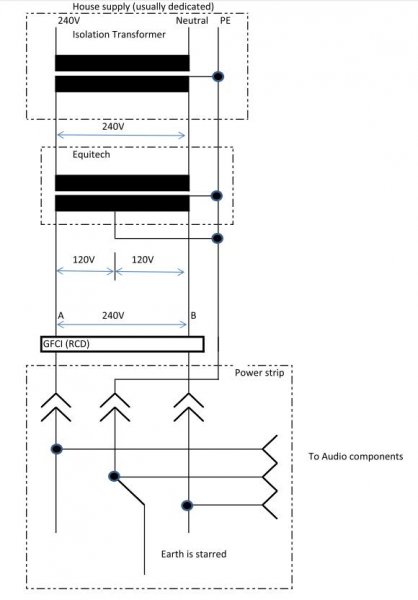What about a music server PC? Is this a no-no?
I have mine plugged in for years with no problems, but others have reported problems with some switching laptop power supplies.
What about a music server PC? Is this a no-no?
I understand that I have to be careful with what I plug into a balanced power outlet. What about a music server PC? Is this a no-no?
The only thing I was told to worry about was light bulbs. I plug everything else into it though.... even wall warts for computers and such
The only thing I was told to worry about was light bulbs. I plug everything else into it though.... even wall warts for computers and such
Very few US components are optimized for balanced power.
(...) the most dramatic transformation was with my darTZeel NHB-108 stereo amplifier. the 108 has 2 'red-orange' eyes on the front that glow, and when the amp nears clipping they will go brighter in degrees. prior to the Equi=tech those lights would sometimes get brighter in the pace of the music when pushing the amp. after the Equi=tech the power supply was so much more stable that i never saw those lamps get bright again.
Mike,
Are you sure that the NHB-108 was not upgraded after you got the Equi=tech? You have just described the difference between the original 108 and the version with the offset upgrade.
what I want to know, if you don't need all the power of a wall mounted system, do the Q boxes give you the same clean balanced power ? From what I can tell reading, yes.
That is a question has crossed my mind on more than one occasion. I might even contact Equi=Tec and pose the question to them directly. If I do, I'll be sure to post the answer here.
what I want to know, if you don't need all the power of a wall mounted system, do the Q boxes give you the same clean balanced power ? From what I can tell reading, yes.
That is a question has crossed my mind on more than one occasion. I might even contact Equi=Tec and pose the question to them directly. If I do, I'll be sure to post the answer here.
Thank you.
'Onepoint' don't put any value into that tradeshow type demonstration test.

One point is sure - noise in audio lines has very different characteristics from noise in power lines, and because we know a little about the first one does not make us experts in power lines. Very few people can mix both and try to correlated them - and I am not of them, although I can understand what is written in the excellent references of post #91 with a little help of Ralph Morrison "Grounding and Shielding Techniques in Instrumentation".
| Steve Williams Site Founder | Site Owner | Administrator | Ron Resnick Site Owner | Administrator | Julian (The Fixer) Website Build | Marketing Managersing |

